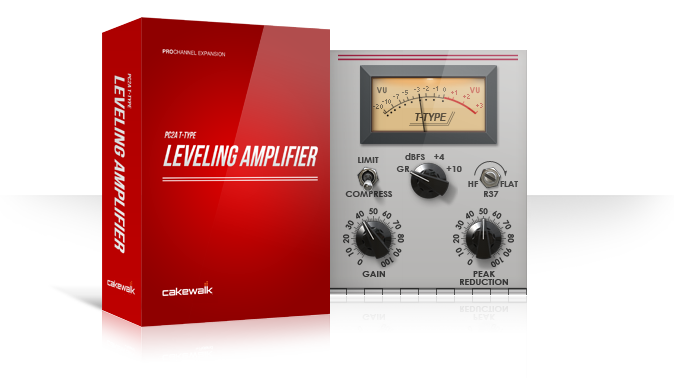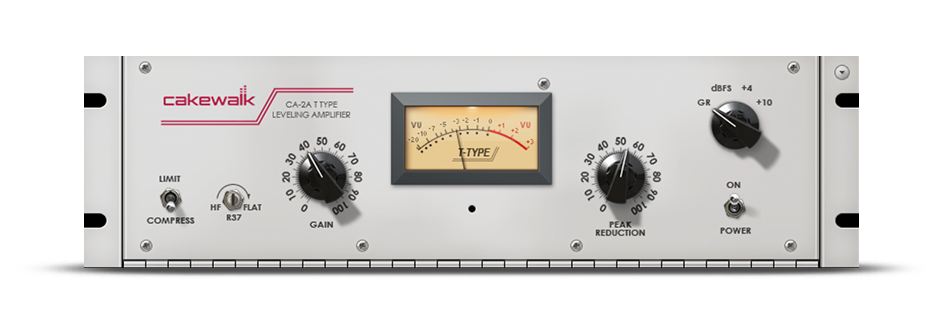Using the CA-2A T-Type Leveling Amplifier
CA-2A T-Type Leveling Amplifier is suitable for just about any audio material. It sounds especially good on vocals, and also works great on guitar, electric and upright bass, guitars, piano, wind instruments, and other tracks that need gentle compression. It even works well on full-program mixes.

Percussive instruments that have a lot of peaks, such as drums, may require more care. Although CA-2A T-Type Leveling Amplifier works great for certain kick drum sounds, you may want to combine CA-2A T-Type Leveling Amplifier with another compressor with a faster release time and more precise control. Unlike a traditional compressor that has Ratio, Threshold, Attack, Release and Make-up Gain controls, CA-2A T-Type Leveling Amplifier is very straightforward with only two primary controls: Gain and Peak Reduction. Peak Reduction controls the amount of compression and Gain controls the post-processed output level.
What can you do with CA-2A T-Type Leveling Amplifier?
The purpose of the CA-2A T-Type Leveling Amplifier is to limit the dynamic range of a signal by reducing the amplitude of its transient peaks. The CA-2A T-Type Leveling Amplifier varies its gain in response to the level of the input signal. Large input signals result in less gain, thus reducing or “compressing” the dynamic range of the signal.
In a typical mix of audio material, there are a few peaks that are much louder than the average signal. Increasing the overall volume would make these peaks exceed the maximum output level, causing unpleasant distortion in the music. Compression reduces the level of any peaks above the threshold so the average level can be boosted.
Limiting versus compression
A compressor typically has a compression ratio lower than 10:1. A limiter has a compression ratio higher than 10:1. For example, with a ratio of 4:1, an input level increase of 4 dB will only result in a 1 dB output level increase.
The threshold is the level the input signal must reach before compression begins. Gain reduction is only applied to audio that exceeds the threshold.
When an audio signal is below this threshold the compressor acts like an amplifier and there is no gain reduction. Above the threshold, the slope becomes less than 45 degrees, indicating gain reduction and hence compression. The point at which a compressor transitions into compression is commonly called the knee.
Compression is suitable for leveling and reducing the general dynamic range of individual instrument tracks such as vocals and drums. Limiting is used to limit the dynamic range and increase the perceived overall level of the mix, and to prevent the audio signal from exceeding a specific level.
Note: The CA-2A T-Type Leveling Amplifier is not a limiter by modern standards, which typically have a fixed Infinity:1 ratio. If you need to use a brickwall-type limiter, a limiter such as the ProChannel Concrete Limiter is a better choice than the CA-2A T-Type Leveling Amplifier.
